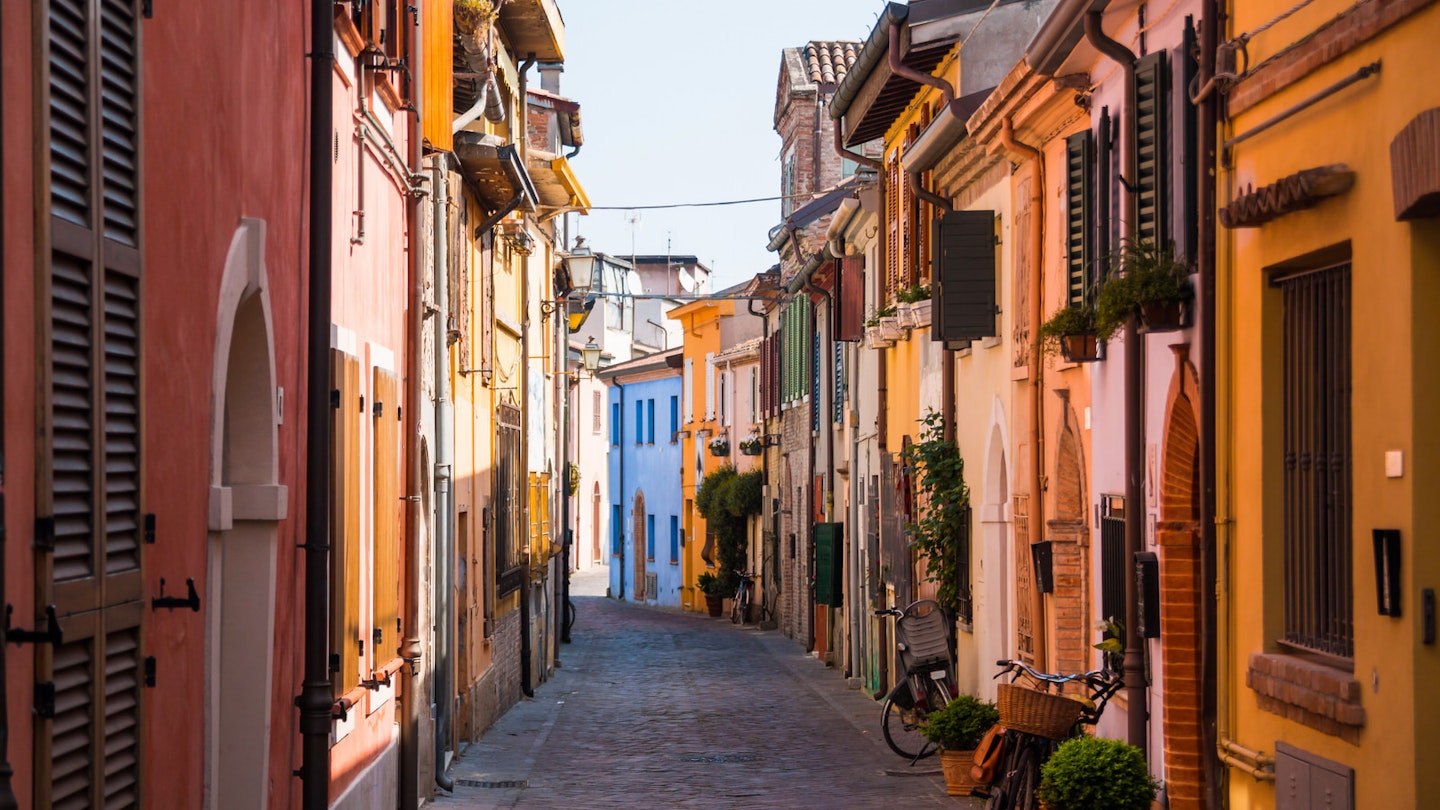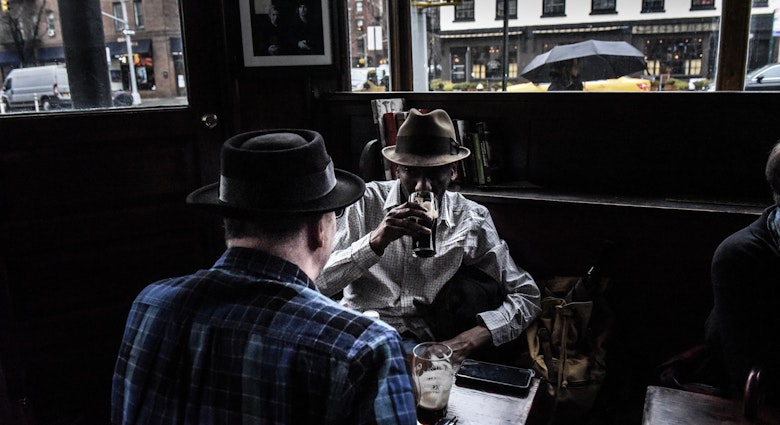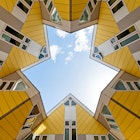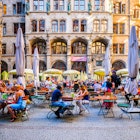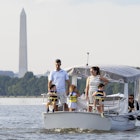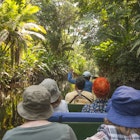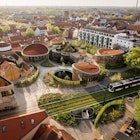With its never-ending seafront, festive vibe and wild nightlife, Rimini is one of Italy’s favourite seaside resorts. It teems in summer as Italian holidaymakers and foreign sun-seekers take to its gentle Adriatic waters and long sandy beaches.
But venture back from the lungomare (seafront promenade) and you’ll discover it’s also a historic city with a charming old town and a fine collection of ancient relics, Renaissance landmarks and cultural gems.

Arco di Augusto
The Arco di Augusto, the oldest Roman arch in northern Italy, provides a monumental introduction to the centro storico (historic centre). Built in 27BC, the towering gateway marked the end of Via Flaminia, the consular road that linked Rome with ancient Ariminum (Rimini). Battlements were added in the 10th century but elements of the arch’s original decor remain, including four carvings of Roman deities: Apollo and Jupiter on the outside; Neptune and Minerva on the city side.
Tempio Malatestiano
From the Arco, it’s a short walk to the Tempio Malatestiano, Rimini’s showpiece Renaissance cathedral. Designed by Leon Battista Alberti in 1450, the Tempio takes its name from Sigismondo Malatesta, Rimini’s 15th-century ruler who commissioned it to replace an earlier Gothic church.
Sigismondo and his beloved mistress, Isotta degli Atti, are both buried here and you’ll find many decorative references to them in the cathedral. Further highlights including a crucifix by Giotto, a fresco by Piero della Francesca, and a series of sculptural bas-reliefs representing the signs of the zodiac.
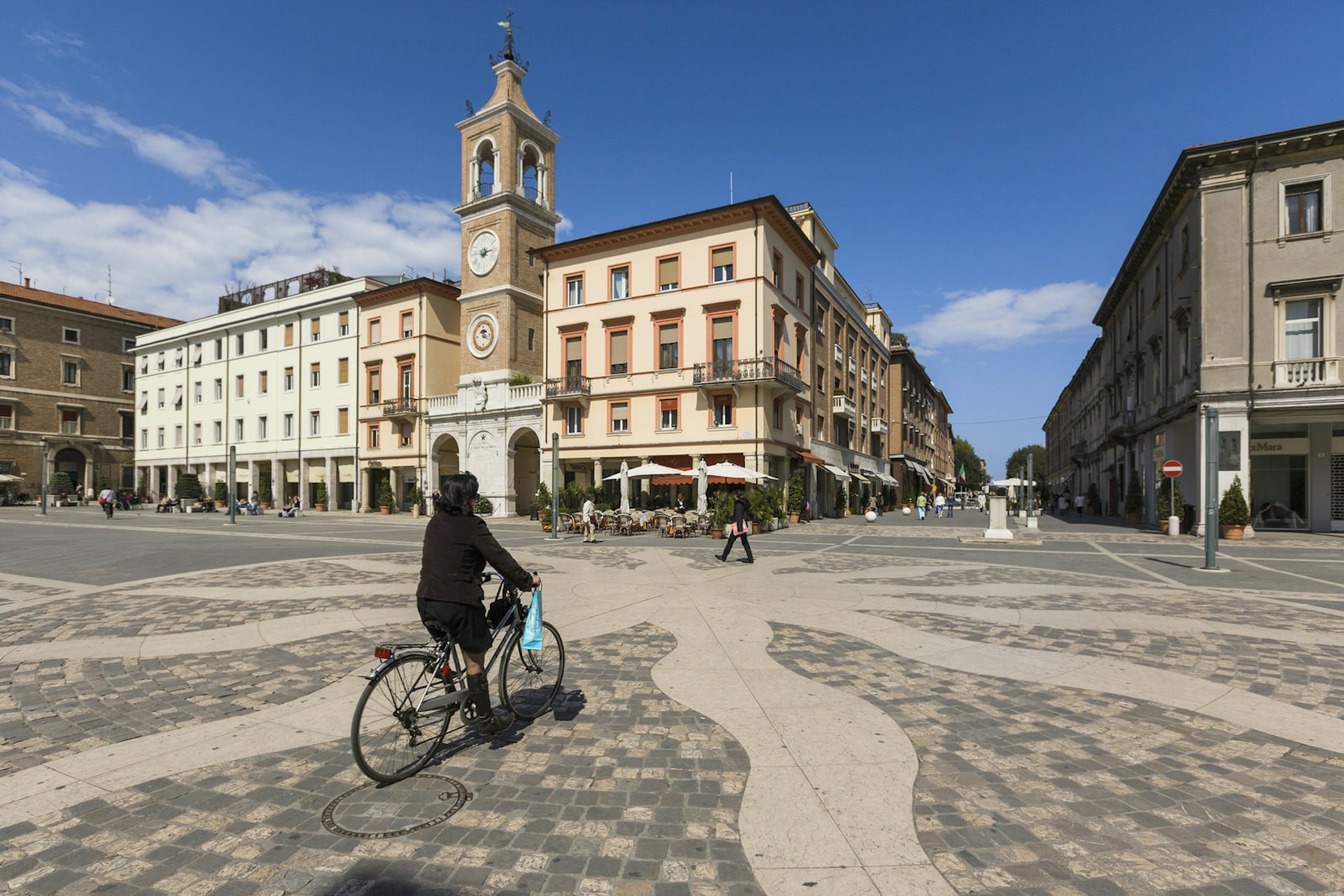
Piazzas
Rimini’s compact old town is largely based on the layout of the Roman city. The main drag, Corso d’Augusto, follows the ancient decumanus maximus Roman road, whilst the central Piazza Tre Martiri sits atop what was once the forum. Julius Caesar, immortalised in a statue, is said to have addressed his legionnaires here in 49BC. More recently, three partisans were executed on the square in 1944 – hence its name, Three Martyrs Square.
Further up the Corso, Piazza Cavour boasts an impressive duo of Gothic palazzi (mansions), a statue of Pope Paolo V, and a white marble fountain that supposedly impressed Leonardo da Vinci. On its southern side, a brick archway leads to the Vecchia Pescheria, an 18th-century fish market now crammed with bars and restaurants.
Teatro Amintore Galli
Also fronting Piazza Cavour is the Teatro Amintore Galli, Rimini’s historic theatre which recently reopened some 150 years after it was gutted by a WWII bomb. Thanks to a lengthy restoration, its magnificent neoclassical interior has been faithfully restored to its original 19th-century glory, complete with Greek-Roman-style columns, classical capitals and a refined gold and ivory palette. Check its website for the latest program of opera, classical music, drama and dance.
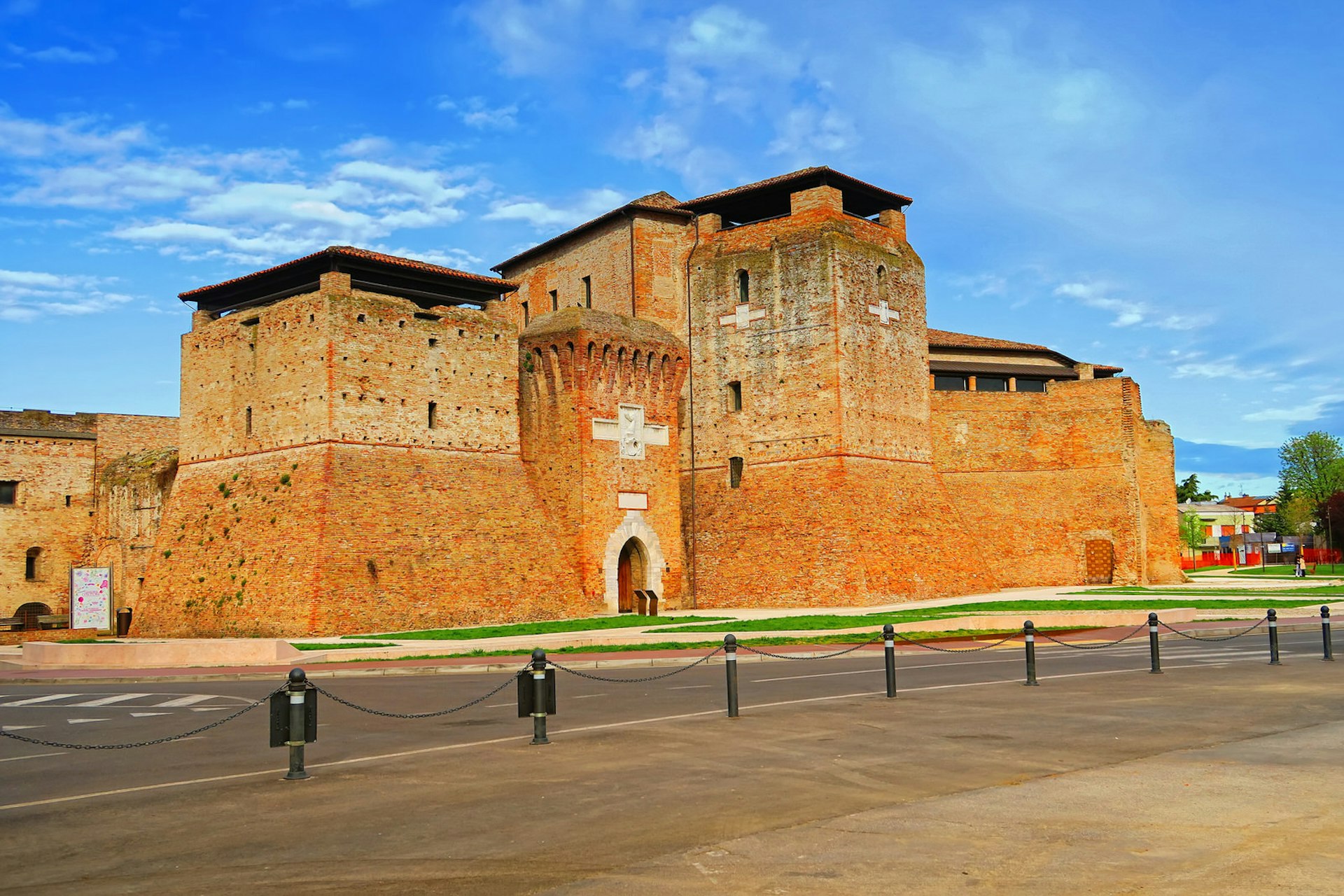
Castel Sismondo
A canon’s shot from the Teatro, Castel Sismondo has been part of Rimini’s cityscape since the mid-15th century. The austere Renaissance castle, also known as the Rocca Malatestiana, originally served as the fortress-residence of military leader Sigismondo Malatesta. Nowadays, it’s used to host cultural events as work continues on refurbishing it for a new museum dedicated to Rimini-born filmmaker Federico Fellini. If all goes according to plan, when the castle reopens its echoing stone halls will sport virtual recreations of Fellini’s legendary film sets.
Biblioteca Civica Gambalunga
For a change of scenery, retire to the hushed halls of Italy’s oldest civic library. This historic institution dates to 1619 when a wealthy benefactor, Alessandro Gambalunga, bequeathed his collection of 1438 books to the municipality. Since then the library’s stock has grown to around 325,000 volumes. These include some of the oldest books ever printed in Italy and titles formerly prohibited by the Church. Guided visits, which must be arranged in advance, take in a suite of centuries-old rooms on the first floor where tomes are stacked in dark-walnut-wood bookshelves.
Domus del Chirurgo
Books were still very much a thing of the future when patients headed to the Domus del Chirurgo for a check-up. The Domus, actually a 2nd-century Roman villa under Piazza Ferrari, belonged to a surgeon (chirurgo in Italian) called Eutyches, who is thought to have run a kind of day hospital out of its main rooms. Of the many finds unearthed here, the most remarkable is a record-breaking collection of medical instruments, now on display at the Museo della Città. At the villa itself, you can see some wonderful floor mosaics, including one showing Orpheus surrounded by animals.
Cinema Fulgor
With its striking art-deco facade and sumptuous gold and scarlet interior, Cinema Fulgor is a Rimini institution. This is where Federico Fellini watched his first films and developed his lifelong passion for the world of celluloid. Aficionados can now follow in the maestro’s footsteps after the cinema was reopened in January 2018 following a six-year revamp fashioned by former Fellini collaborator and Oscar-winning production designer, Dante Ferretti. The cinema is central to Rimini’s plans for a new Museo Internazionale Federico Fellini, and eventually the floors above it will host exhibitions dedicated to the director.
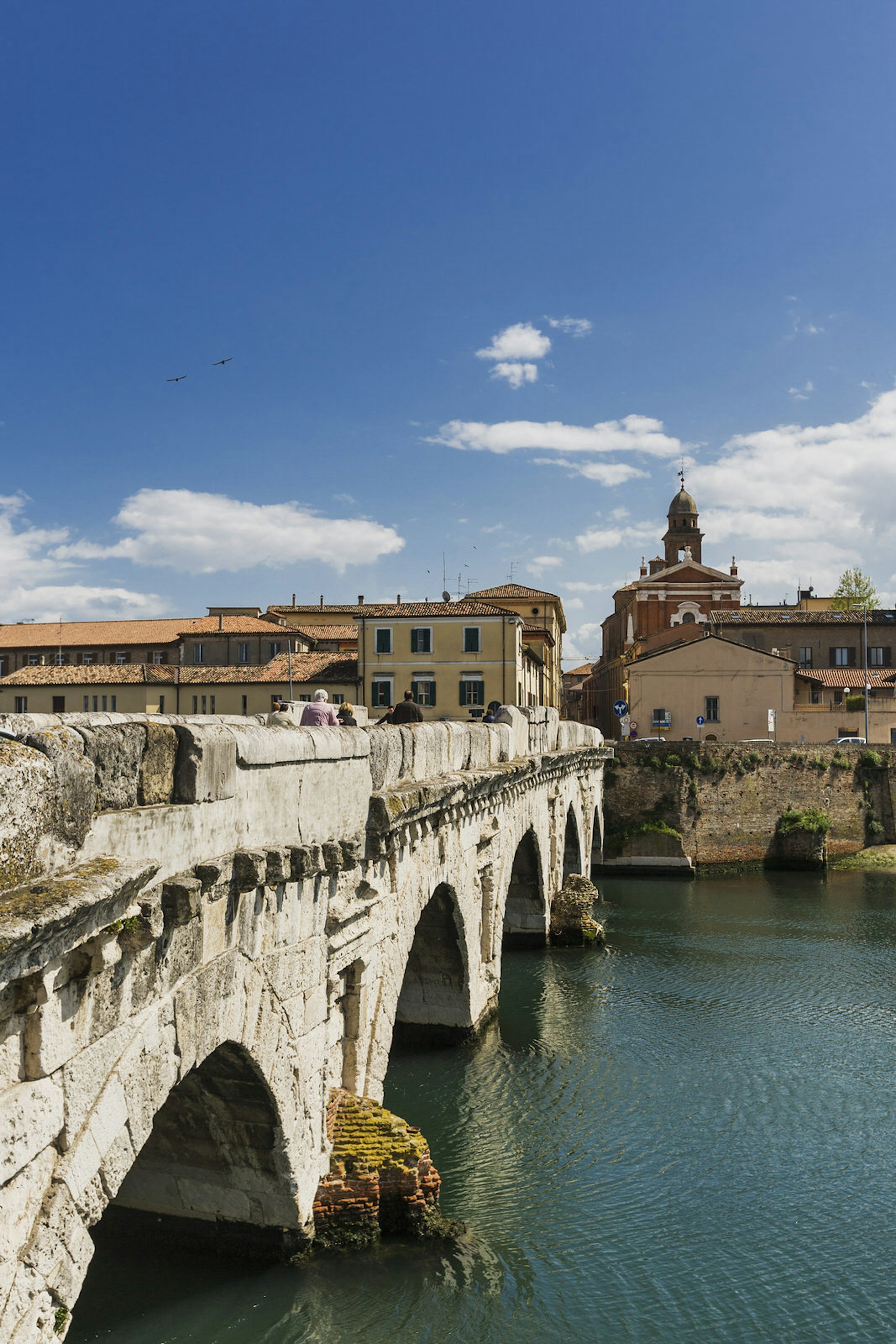
Ponte di Tiberio
Road traffic has been trundling over the Ponte di Tiberio since the 1st century AD and still today cars crunch across it to access the historic centre. In ancient times it marked the beginning of two Roman consular roads: Via Emilia, which ran northwest to Piacenza in the Po river valley, and Via Popilia, which served Ravenna and the northeast. For photogenic views of the bridges five arches, head down to the green landscaped area on the bridge’s western side.
Borgo San Giuliano
Cross the Ponte di Tiberio and you come to the Borgo San Giuliano, one of Rimini’s most atmospheric quarters. Now a hip area of cobbled lanes, prim pastel-coloured houses, wine bars and popular trattorias, the neighbourhood was once home to Rimini’s fishing community. Look out for ceramic signs attached to some houses with the names and nicknames of the fishermen who used to live there. Also of note are the murals that adorn the streets, many inspired by Fellini and his films.
Duncan Garwood’s tour of Rimini was provided by Discover Rimini and the Rimini Tourist Office. Lonely Planet contributors do not accept freebies in exchange for positive coverage.
https://shop.lonelyplanet.com/products/italy-travel-guide-13

